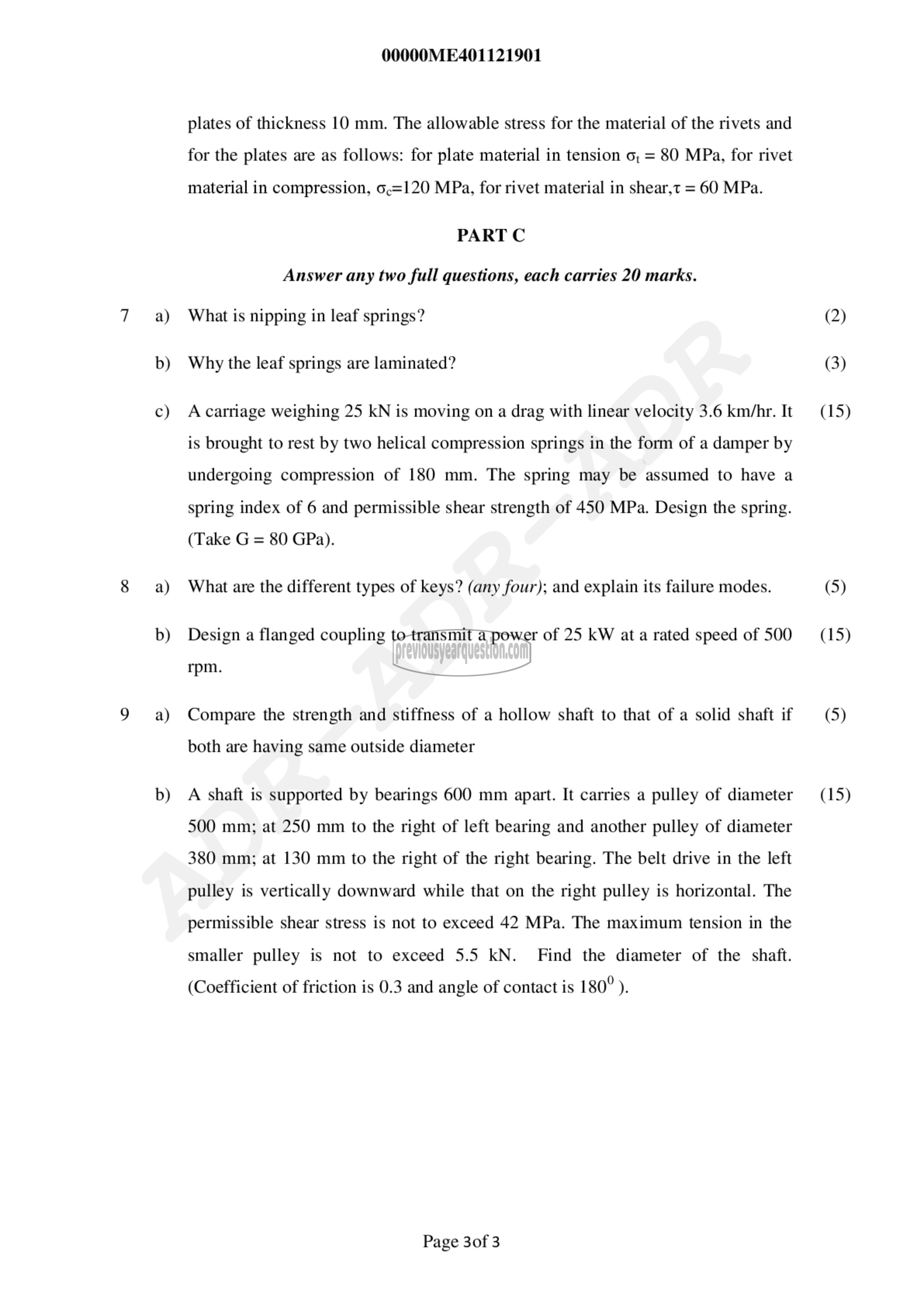APJ ABDUL KALAM TECHNOLOGICAL UNIVERSITY Previous Years Question Paper & Answer
Semester : SEMESTER 7
Subject : Design of Machine Elements I
Year : 2020
Term : SEPTEMBER
Branch : MECHANICAL ENGINEERING
Scheme : 2015 Full Time
Course Code : ME 401
Page:3
a)
b)
0)
೩)
0)
೩)
0)
00000ME401121901
plates of thickness 10 mm. The allowable stress for the material of the rivets and
for the plates are as follows: for plate material in tension o, = 80 MPa, for rivet
material in compression, 120ےہ MPa, for rivet material in shear,t = 60 MPa.
PART C
Answer any two full questions, each carries 20 marks.
What is nipping in leaf springs?
Why the leaf springs are laminated?
A carriage weighing 25 kN is moving on a drag with linear velocity 3.6 km/hr. It
is brought to rest by two helical compression springs in the form of a damper by
undergoing compression of 180 mm. The spring may be assumed to have a
spring index of 6 and permissible shear strength of 450 MPa. Design the spring.
(Take G = 80 GPa).
What are the different types of keys? (any four); and explain its failure modes.
Design a flanged coupling to transmit a power of 25 kW at a rated speed of 500
rpm.
Compare the strength and stiffness of a hollow shaft to that of a solid shaft if
both are having same outside diameter
A shaft is supported by bearings 600 mm apart. It carries a pulley of diameter
500 mm; at 250 mm to the right of left bearing and another pulley of diameter
380 mm; at 130 mm to the right of the right bearing. The belt drive in the left
pulley is vertically downward while that on the right pulley is horizontal. The
permissible shear stress is not to exceed 42 MPa. The maximum tension in the
smaller pulley is not to exceed 5.5 kN. Find the diameter of the shaft.
(Coefficient of friction is 0.3 and angle of contact is 180° ).
Page 3083
(2)
(3)
(15)
(5)
(15)
(5)
(15)
